Exploring Samothrace Chora and the Temple of the Great Gods Part 1
From behind the rocky crags completely hidden from sight, Samothrace Chora has been taunting me, calling me. This protected view is a real asset to a small island that needed to hide itself away from pirates back in the days of yore. The freshly harvested wheat fields reflect a glorious golden light. The only sound is the rattle of the dry and brittle scrub as the cool breeze from the mountain sweeps over the valley floor. The messages from Mount Saos are coming through loud and clear and today I plan to explore a little more.
Just beyond my accommodation at the Aiolis set amongst a cluster of beehives is a small microbrewery. According to their website, they make an excellent India Pale Ale and are a successful business, supplying some of Athens’s top bars. If you’re a beer drinker that’s something to look out for. You can read more here: https://www.samothrakibeer.gr/en/
Chora is about 6 kilometres from the port but all uphill. I try to gauge whether my aged bones could make it on foot. However, although the spirit is willing, my general unfitness and inappropriate footwear concede that this is a no-goer. The bus it is!
On the way to the bus stop, I call in to the small bakery adjacent to Sta Kala Kathomena for a slice of freshly baked bougatsa. There is no better start to the day! At the bus station, there doesn’t appear to be anyone else waiting but as usual, I’m much too early. An opportune time to scoff my bakery treasure.
I study the timetable again and make a rough plan of how I can utilise the bus service during the rest of my stay. This winter service is scant and looking at the timings of the departures, appears to serve the local schools which isn’t unexpected. No visit to Samothrace would be complete without a visit to the Sanctuary of the Great Gods. The bus to Therma runs through Paleopoli, the closest stop to the Sanctuary. Between Therma and Ano Meria is the entrance to the Fonia Gorge, probably one of the most impressive parts of the island to visit. As much as I would love to see the impressive waterfalls, I’m not travelling with walking boots and I don’t think it would be wise to do this on my own either. Anyway, this has planted some seeds for me to mull over.
Just in case I get stranded at any time I also take the phone number of the local (and possibly the only) taxi service.
One minute before the scheduled departure time, several locals and a bus driver slowly amble over to a small bus. Even after a month of travelling in Greece I still find it difficult to synchronize to a slower pace of life. I pay a couple of euros for the bus ticket and shortly after we’re on our way up to Chora.
Before I know it, the entrance to Chora is finally revealed to me in all its splendid glory. A statue of Nike the Goddess of Victory is elegantly poised below the amphitheatre of stone houses topped with terracotta pan tiles. With the Kastro to the North and Mount Saos to the South, the village is well protected.
The only way is up. With the Kastro in my sights, the steep and winding alleyways send me in all directions. A true pirate deterrent in every sense of the word!
As I reach the approach to the Kastro at the top of Chora, the wind begins to whip up. Even the pine-clad hillsides surrounding the village don’t offer any shelter. Judging by the number of rooves battened down by rocks, this seems to be par for the course. Protected from pirates but not the elements!
A cat sheltering in a nook spots me as I pass by and mews for attention. A little pat on the head unfortunately sends out the wrong signals and it decides to follow me to the Kastro. It continually weaves its way in between my feet making walking a challenge. The only solution is to pick the needy feline up and carry it under my arm – hence the wonky photographs!
The Kastro was built in the early 15th century by Genoese ruler Palamedes Palaeologos Gattilusio, a member of the powerful House of Gattilusio who ruled part of the Aegean. His father was Francesco II of Lesvos. The Kastro was built on the site of a 10th century Byzantine castle though there is evidence that the site has been inhabited since Neolithic times.
The marble plaque built into the eastern wall of the internal fortification is the Gattiluso coat of arms. The single-headed eagle on the left-hand side is the emblem of the Genoese family. On the right-hand side is the monogram of Palaeologos and the plaque also states the construction date as 1431.
Continuing along the path at the top of the village is a set of stone steps leading up the side of an old stone house. There is an old water fountain decorated in stone relief with a two-headed eagle, fish on either side and below are two snakes entwined. Just beyond is a huge plane tree that has embedded itself into the stone wall using all its might to stake its rightful territory. The steps bring me to a small square called Platia Athenasios Vafeidis. This paved area is shaded by more giant planes just beginning to shed their autumnal leaves which have been swept into a corner by the wind. A place to meet with friends and survey the village below or to sit in quiet contemplation.
At the top of the steps is a path that runs along the back of the village and into the covering of pine trees. Google Maps indicates that this is the start of a walking trail that goes in the direction of the Fengari peak of Mount Saos. I can see why this island is a magnet for hikers.
The path now brings me to the Church of the Assumption of the Virgin Mary, easily identified by its bell tower and clock. This is the most significant church on the island and a relatively ‘young’ church having been consecrated in 1875. It is associated with a tragic event that took place in 1821 and which left its mark on the island forever.
In 1821-1829 the Greeks waged a successful campaign in the form of the Greek War of Independence against the Ottoman Empire. Samothracians still under the power of the Ottomans, rose up against the authorities. The response was swift and ferocious resulting in many of the islanders being massacred. Those who survived were taken as prisoners and forced into slavery. Five young men from the island were captured and against their wishes were made to convert to Islam. Several years later they returned to the island and converted back to Christianity, an act that the Ottoman authorities found deeply offensive. Again their response was brutal. They were captured, tortured and eventually executed in Makri, Evia. The five young men named Manuil, Georgios, Michail, Theodoros and Georgios became known as the Five Neomartyrs and their relics are housed within the church.
The church isn’t open at the moment but from what I’ve read, the interior is very ornate with a unique curved wooden ceiling. Stones steps below the bell tower lead to the church courtyard and a war memorial that commemorates the island’s fallen heroes. One thing is for sure, the church is one of the best vantage points to get a great view of the Kastro and village.
To be continued in the next post!




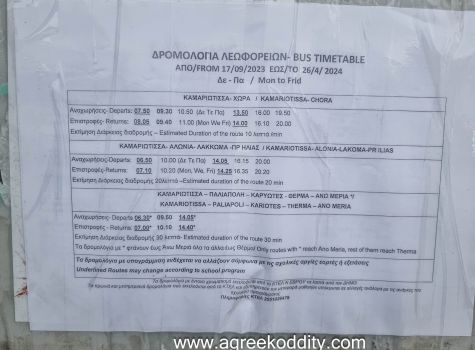
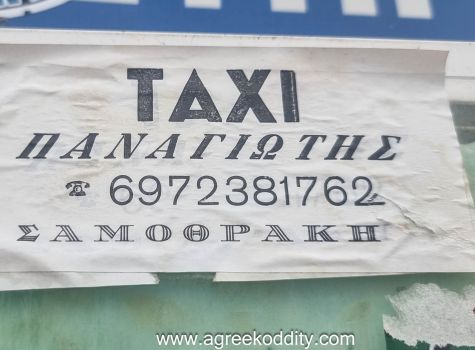
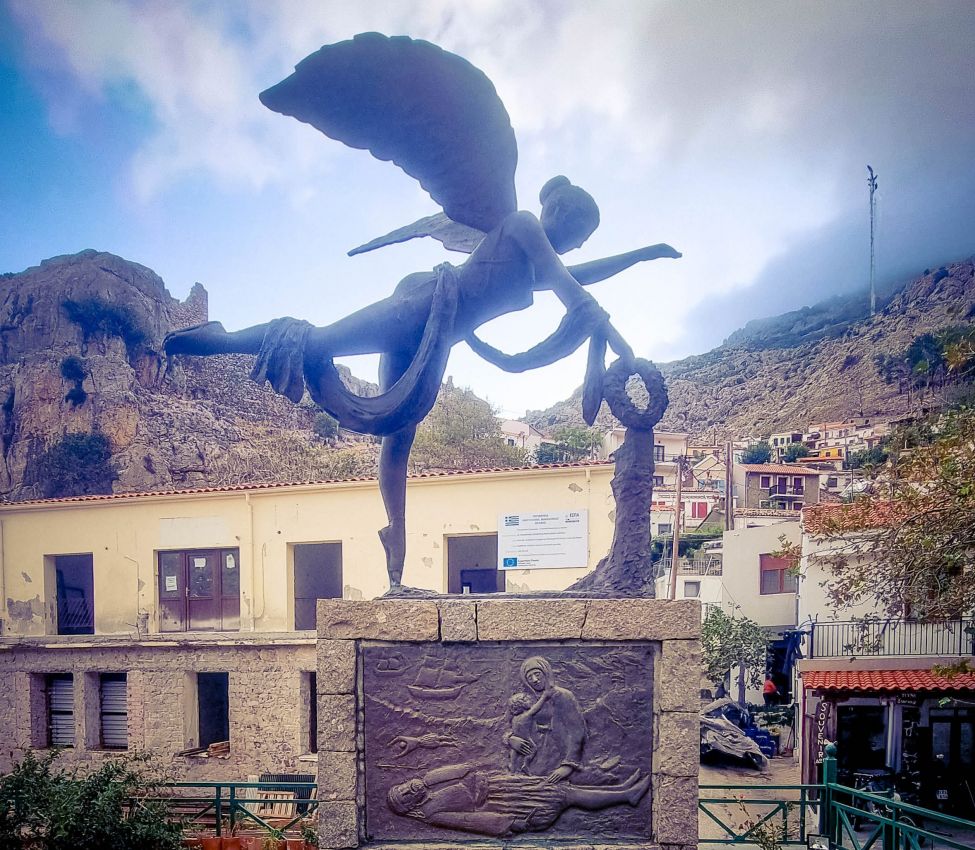
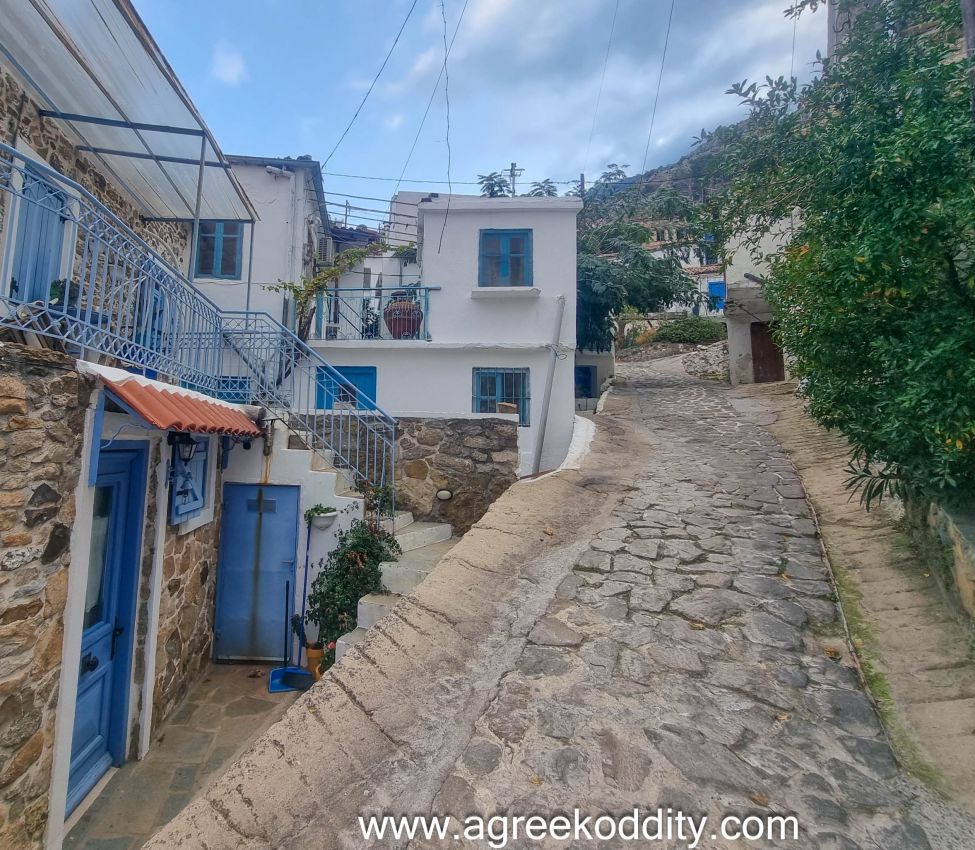
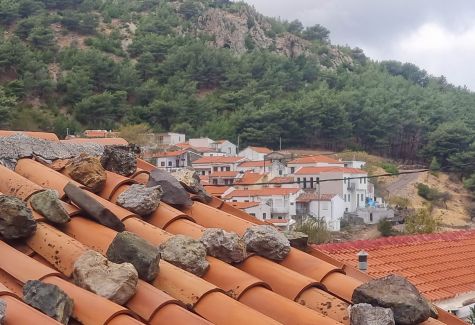
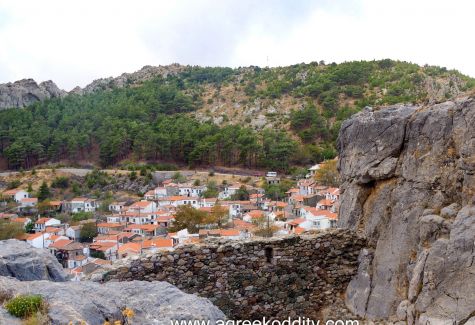
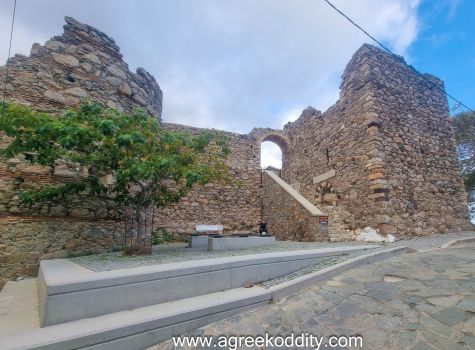
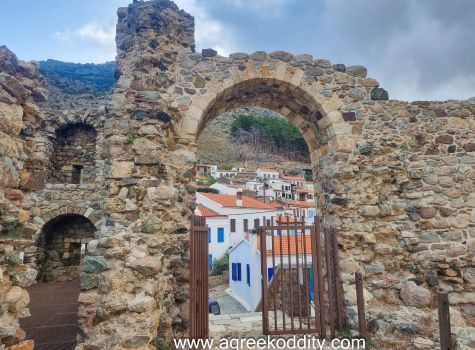

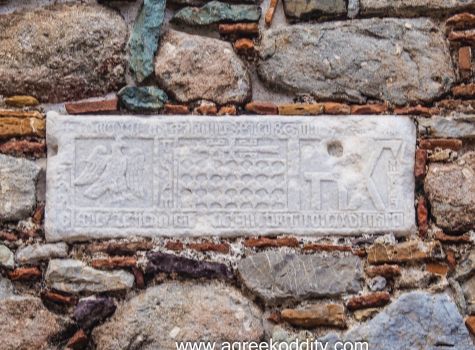

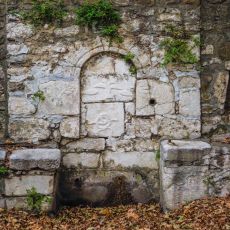

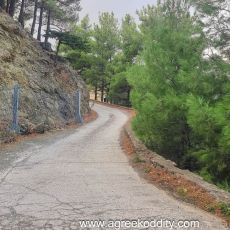
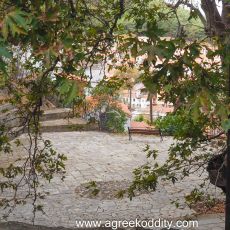
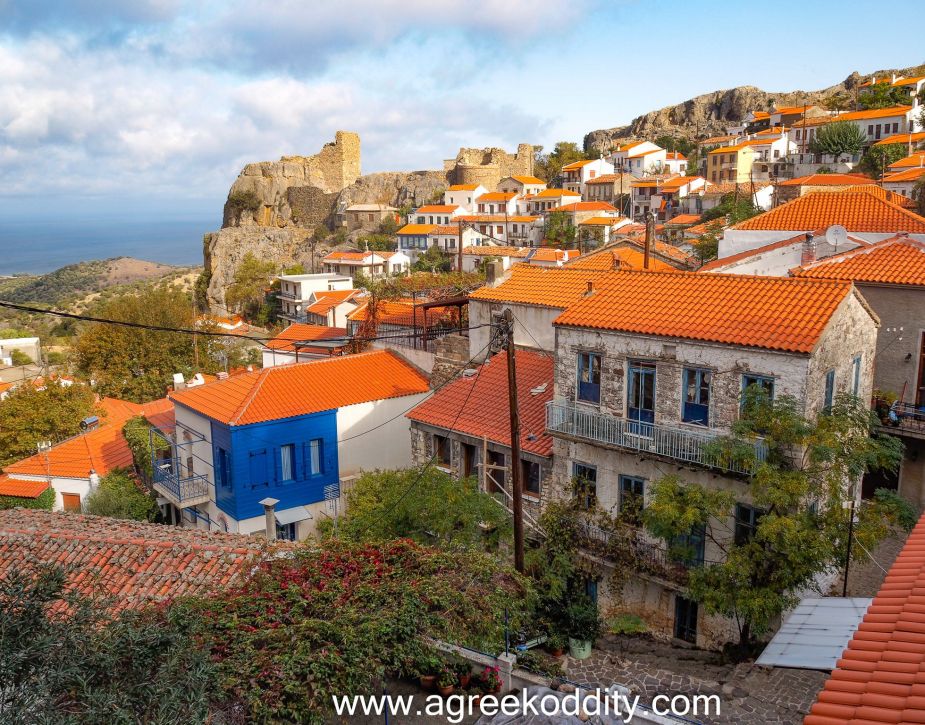
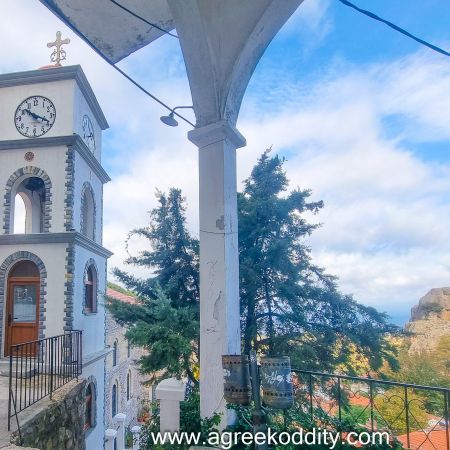
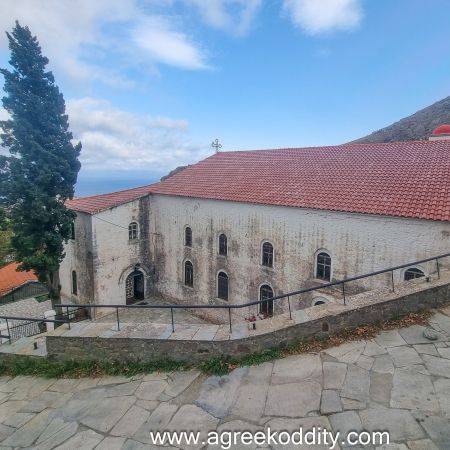

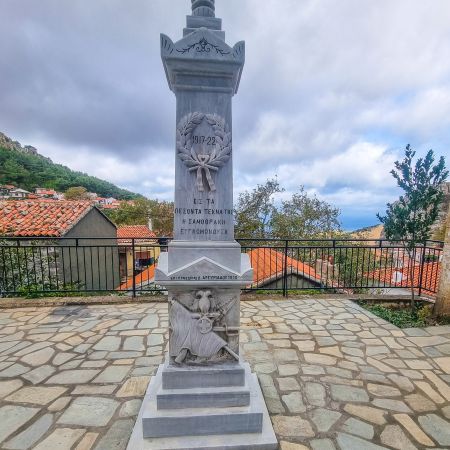






Very interesting Stephanie, I love exploring places like this, just wandering the streets and taking in the atmosphere. I must make more of an effort to learn more about the history of the places I visit.
Most definitely Liz! ❤❤❤
Imagining you wandering the streets with a cat under your arm 😆
Haha Yes Sozzle – it was the only way I could walk anywhere!